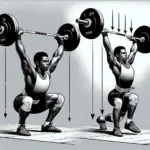Sled training, also known as “sled pushing” or “sled pulling,” is a form of resistance training that has gained popularity in recent years. As an IELTS candidate, understanding this sports-related vocabulary can be crucial for success in the exam. Let’s dive into the intricacies of this term and explore how to effectively use it in your IELTS preparation.
Definition and Pronunciation
Sled training (noun) /slɛd ˈtreɪnɪŋ/: A type of resistance exercise that involves pushing or pulling a weighted sled across a surface, typically used to improve strength, power, and conditioning.
 Athlete performing sled training
Athlete performing sled training
Context and Usage
Examples in Context
-
The football team incorporated sled training into their offseason workouts to improve explosive power.
Analysis: This sentence demonstrates how sled training is used in team sports for specific performance enhancement. -
Personal trainers often recommend sled training for clients looking to burn calories and build full-body strength simultaneously.
Analysis: Here, we see the application of sled training in personal fitness regimens, highlighting its versatility. -
The rehabilitation center uses sled training as a low-impact way to help patients recover from lower body injuries.
Analysis: This example shows the therapeutic applications of sled training, emphasizing its adaptability to different fitness levels and needs. -
CrossFit enthusiasts have embraced sled training as a challenging addition to their high-intensity workouts.
Analysis: This sentence illustrates the popularity of sled training in contemporary fitness trends. -
Researchers found that regular sled training sessions significantly improved athletes’ sprint performance over a 12-week period.
Analysis: This example demonstrates the use of sled training in a scientific context, highlighting its measurable benefits.
Common Contexts
Sled training is frequently discussed in contexts related to:
- Sports performance enhancement
- Strength and conditioning programs
- Rehabilitation and physical therapy
- High-intensity interval training (HIIT)
- Functional fitness routines
Frequency in IELTS
While “sled training” is not a high-frequency term in IELTS exams, it may appear in:
- Reading passages about sports science or fitness trends
- Listening sections featuring discussions on athletic training methods
- Writing Task 2 essays on topics related to health, fitness, or sports technology
- Speaking Part 3 questions about exercise innovations or sports equipment
Understanding this term can give you an edge in comprehending and discussing modern fitness concepts.
Vocabulary Analysis
Word Structure
- Sled (noun): The base equipment used in the exercise
- Training (noun): The act of teaching, learning, or practicing skills
When combined, these words create a compound noun describing a specific type of exercise.
Synonyms and Antonyms
Synonyms:
- Prowler pushing /ˈpraʊlər ˈpʊʃɪŋ/ (noun): A similar exercise using a specific type of weighted sled.
- Resistance running /rɪˈzɪstəns ˈrʌnɪŋ/ (noun): A broader term that includes sled training and other forms of running against resistance.
Antonyms:
- Free running /friː ˈrʌnɪŋ/ (noun): Running without any additional resistance or equipment.
- Weightless training /ˈweɪtləs ˈtreɪnɪŋ/ (noun): Exercises performed without external weights or resistance.
Memorization Techniques
Mind Map
Create a mind map with “Sled Training” at the center, branching out to related concepts:
- Equipment: Sled, weights, harness
- Benefits: Strength, power, conditioning
- Variations: Pushing, pulling, sprinting
- Applications: Sports, fitness, rehabilitation
Mnemonic Story
Imagine a powerful athlete Struggling to push a Load across the field, building Explosive strength and Determination. This TRAINING method helps them become unstoppable.
Practice Exercises
-
Write a paragraph describing the benefits of sled training for athletes in your favorite sport.
-
Create a dialogue between a personal trainer and a client discussing the incorporation of sled training into their fitness routine.
-
Compare and contrast sled training with traditional weightlifting in a short essay, focusing on their respective advantages and disadvantages.
-
Describe the equipment and setup required for sled training in detail, as if explaining it to someone who has never seen it before.
-
Write a letter to a friend recommending sled training as a new exercise to try, explaining its benefits and how to get started.
Remember to use the term “sled training” naturally within your responses, and try to incorporate related vocabulary to demonstrate your range of fitness and sports-related language.
Conclusion
Mastering sports-related vocabulary like “sled training” can significantly enhance your performance in the IELTS exam, particularly in sections dealing with health, fitness, and athletic performance. By understanding its definition, context, and related terms, you’re better equipped to comprehend complex texts and articulate your thoughts on modern training methods.
We encourage you to practice using “sled training” in your own sentences and discussions. If you have any questions about this term or how to use it effectively in your IELTS preparation, please feel free to ask in the comments section below. Remember, consistent practice and exposure to diverse vocabulary is key to success in the IELTS exam.
For more insights on managing work-related stress, which can be beneficial when discussing the mental aspects of athletic training, check out our article on how to manage work-related anxiety.


